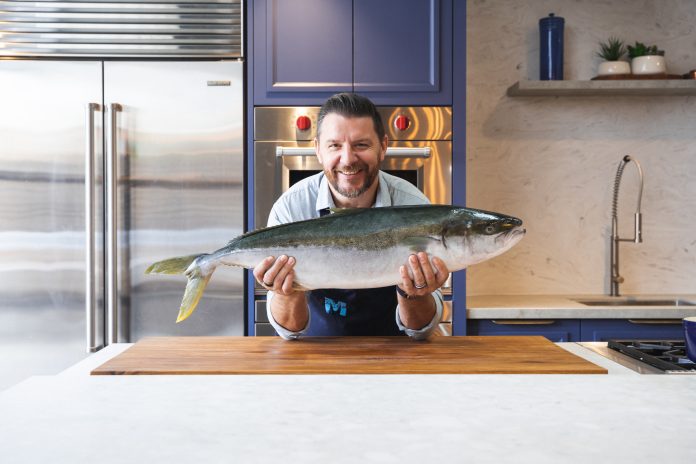With over 33 million kilograms of seafood expected to be purchased over the Easter period*, new research from the Aquaculture Stewardship Council (ASC) and the Marine Stewardship Council (MSC) reveals that going directly to a fishmonger is considered “the easiest way to buy sustainable seafood,” despite MSC and ASC labels being available across select retailers and all major supermarkets.
The MSC and ASC have enlisted renowned TV Chef and My Kitchen Rules judge Manu Feildel to help Australian seafood consumers (58%) who find it difficult to buy sustainable seafood at Easter.
One in five (21%) stated that they don’t know what to look for and 17% stated they don’t always trust the claims on seafood, according to the research.
Manu has developed a series of sustainable seafood recipes using toothfish, pipis and kingfish, that will aid eco-conscious Aussies in putting delicious, but environmentally friendly, dishes on their table.
Commenting on the importance of choosing certified sustainable seafood Manu says: “Australia has some of the best seafood in the world which we are lucky to have access to. I’m proud to join forces with the Marine Stewardship Council and the Aquaculture Stewardship Council to encourage the nation to make future-friendly choices this Easter, and beyond.
“Choosing climate-friendly sustainable seafood means preserving fish stocks for future generations. When shopping for seafood it’s important that we all start asking key questions — where did the fish come from, how was it caught or harvested and is it independently certified as sustainable. The more everyone starts asking these questions, the more retailers and brands will commit to sustainable sourcing.”
Fishmongers “most trusted” to deliver sustainable
The new data also reveals that “the top option is to only buy from a fishmonger that sells sustainable seafood (60%), followed by looking for the ASC and MSC labels (38%) and then using an app or guide (24%).”
According to the United Nations Food and Agriculture Organisation, one-third of the world’s fisheries have been exploited beyond sustainable limits, but some of Australia’s fishmongers are leading by example and doing their part to minimise the impact climate change and overfishing have on our marine environment.
Harley & Johns in Wollongong is just one of a few independent fishmongers nationally that is certified to the MSC’s and ASC’s Chain of Custody standard meaning that seafood can carry the MSC blue fish tick label to indicate wild sustainable seafood or the green ASC label to show responsibly farmed seafood.
Harley & Jones’ Fishmonger Grant Logue commented on the rising interest in sustainably sourced seafood, stating: “As well as wanting to know how to cook seafood, customers are increasingly concerned about where their seafood comes from and how its harvested. There’s often a lot of confusion, so I often point to the blue MSC and green ASC labels as easy markers of trust.”
Shoppers can also find MSC and ASC labelled sustainable seafood in the frozen, fresh and tinned aisles of all major supermarkets.
The importance of a label
The new data also shows that “when seafood consumers are aware of the MSC label, they’re more than twice as likely as those who are not aware to say they find it easy to buy sustainable seafood during the Easter period (63% compared to 29%).
“Residents in NSW are more likely (23%) than those in VIC (14%) and QLD (12%) to say shopping for sustainable seafood is easy as they just look out for the MSC blue fish tick or ASC green label.”
Australian seafood leaders Anne Gabriel from the MSC and Duncan Leadbitter from the ASC conclude: “Sustainable seafood is easy to find just by looking for the MSC blue label and the ASC green label on popular brands and in major supermarkets. This shows that the fish in the product comes from either an MSC certified sustainable fishery or an ASC certified responsible farm.”
For sustainable seafood recipes and tips, plus more information on solutions to ending overfishing visit msc.org/en-au and au.asc-aqua.org.
Data source
*According to the FRDC, 335 kt of seafood was purchased in Australia during 2019/20. The Easter period is defined as the month of April when sales of seafood are estimated to be 20% higher than a standard month. The average portion size of fish is assumed to be 115g.





